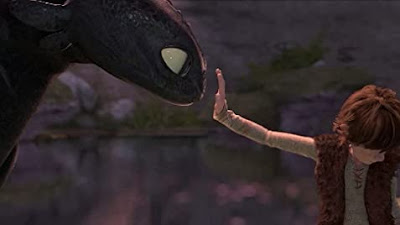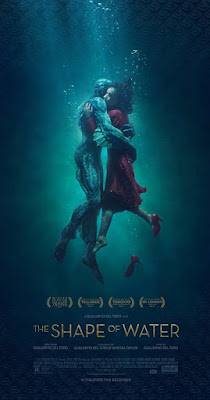IMDB: 8.4
Metacritic:N/A
RT: 100%
The year is 2013. House of Cards has just made its streaming debut on Netflix and transformed the production of TV content permanently.
Flash-forward to 2020. Netflix is spending $17 billion a year producing original content with the streaming wars in full force. Sadly, most of that original content sucks. Some gems do slip through the cracks, but Netflix and all the other platforms nowadays (with the possible exception of HBO) basically function as content farms designed to shove out as much bingeable crap as possible to a pandemic-ridden stay-at-home audience.
It was against this depressing backdrop that I sat down to watch the Netflix original The Dragon Prince for the first time about a month ago. I say the "first time" because I've already re-watched all three seasons a second time (and I rarely ever rewatch a show immediately after watching it for the first time). And after the second time through I can safely say that not only is TDP one of the most satisfying Netflix productions I've ever watched, it's also one of the greatest high fantasy stories I've ever seen. At its best, TDP more than holds its own against series like Game of Thrones. For me, at least, it's that good.
TDP is the brainchild of Aaron Ehasz and Justin Richmond and has been widely labeled as the spiritual successor to Avatar: The Last Airbender. Ehasz was a lead writer on ATLA, and quite a few similarities between the two shows are apparent on a first viewing. Plenty of corny, kid-centric humor (dad jokes abound). Strong commentary on the cyclical nature of war and its impacts on individuals and society as a whole. A clearly defined magic system built on natural elements.
TDP isn't a mere ATLA clone, though. In some ways, I think TDP has the potential to exceed its creative predecessor. We're only three seasons in, with four more planned to round out the saga, and I think I am more emotionally invested in this show than I ever was with ATLA, which astounds me because I absolutely love ATLA.
So without getting into spoilers, I just want to highlight a few aspects of the show that make it so great.
Like any good high fantasy property, TDP excels at constructing a complex and well-realized universe. It draws on many fantasy tropes, but manages to put a unique spin on most of them. And while Season 1 does struggle a bit at times with lengthy exposition, the writers do a great job fleshing out the world organically as the show progresses. The use of flashbacks in particular stood out to me as a significant strength of TDP. Normally I'm not a huge fan of flashbacks as a plot device, but TDP (like ATLA) uses them brilliantly. Finally, the magic system is not only highly interesting and internally consistent, but metaphorically builds on the core themes of the show itself.
The Characters
Like most good shows, the characters are what really make TDP a pleasure to watch. The show manages to introduce and develop a sizeable main cast consisting of several primary and numerous secondary characters. All the main characters progress through satisfying and well-realized arcs, each packing a heavy emotional punch. Nothing ever really feels forced, and at no point did I find myself questioning seemingly arbitrary character decisions shoehorned in to suit the needs of the plot. There are so many characters to love in TDP, and what's even better is that they cover a huge swath of diversity and representation. None of it feels performative or artificial either, which can be difficult to pull off. Kids programming has come a long way in this regard! Honestly, I think TDP does a better job on that front than most shows oriented solely towards adults.
The Credits
TDP uses its post-episode ending credits sequence quite creatively to further the story and develop its characters. Netflix's automatic skip credits feature is actually quite annoying because watching the credits for TDP is a must. In just 20 seconds after each episode with simple still illustrations, the credits provide both background character development and critical plot foreshadowing. I've never seen a show do anything like this before and honestly I think it's absolutely brilliant.
The Animation
Ironically, one of the things that initially put me off from watching TDP was the use of 3D animation. I'm not always a huge fan of 3D animation when used in a TV setting with budget and time constraints. Sure, Pixar makes computer-generated 3D animation look stunning again and again, but on the TV side such animation doesn't always look that great, especially when compared to the beauty of traditional 2D animation.
Although the lower frame rate in Season 1 does take some time to get used to (a la Into the Spiderverse), the quality of the animation really picks up in Seasons 2 and 3. Many of the set pieces, creatures, and battle sequences look flat out amazing.
The Themes
One of the things I love about programming ostensibly intended for children is that the limitations on what can be said and shown really forces writers to address heavy themes in creative and subtle ways. Game of Thrones can throw blood, gore, and nudity at the screen with gusto, but a show like TDP obviously cannot. On paper, such a restriction might appear like a significant obstacle in writing mature plot lines that deal with heavy subjects like war, death, anxiety, and corruption. But when done right, I think "kids" shows can tackle these themes just as well as their adult-oriented counterparts. To use an obvious example, ATLA expertly dealt with topics like colonialism, refugee migration, and environmental destruction.
TDP continues in this tradition. There are lots of great messages for kids and adults alike packed into the show, but I want to focus on one in particular: coping with grief in the wake of the death of a loved one. Grief is a hard theme to do well in TV programming. But I'm honestly not sure if I've ever seen a show do it as well as TDP. The show takes the better part of two full seasons exploring how two of the main characters process the death of a loved one. The thematic exploration of death and grief in that subplot hit really close to home for me, especially on the second watch through. It was just done so well and it felt incredibly realistic.
So . . . should you watch The Dragon Prince?
I'd recommend this show to pretty much anyone who enjoys fantasy in any way, shape, or form. It's got an epic world, wonderful characters, and a thrilling story. The writing can be a little corny at times, and the pacing in Season 1 is a little slow in the second half of the season. But on the whole, TDP is truly a fantasy epic that represents some of the best original content put out by any streaming platform in recent years.
-CC




























